Trigon
Shortfilm, 35mm Cinemascope
This is a dark fantastic shortfilm about a person who gets lost in the media. The film plays on February, 29th in 1951 - which explains the obscure behaviour of time and space in this the movie.
I've written and directed this film in my early twenties. Back then, it was my dream to become a movie director and I'm usually rather straightforward when I have a dream: I just realize it. The first step was to create the story. As I'm a very visually oriented person, I developed the script in the form of a storyboard. Drawing all the shots took me about one year - I worked on that for one hour every evening after my job.
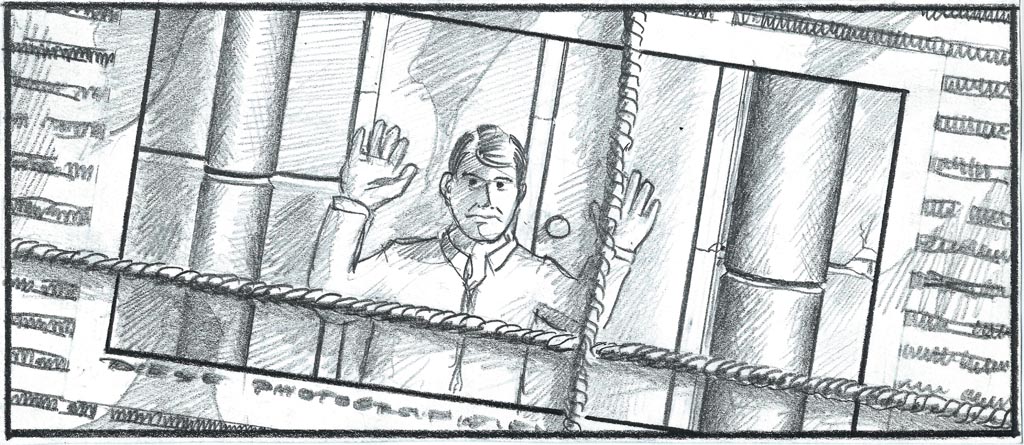
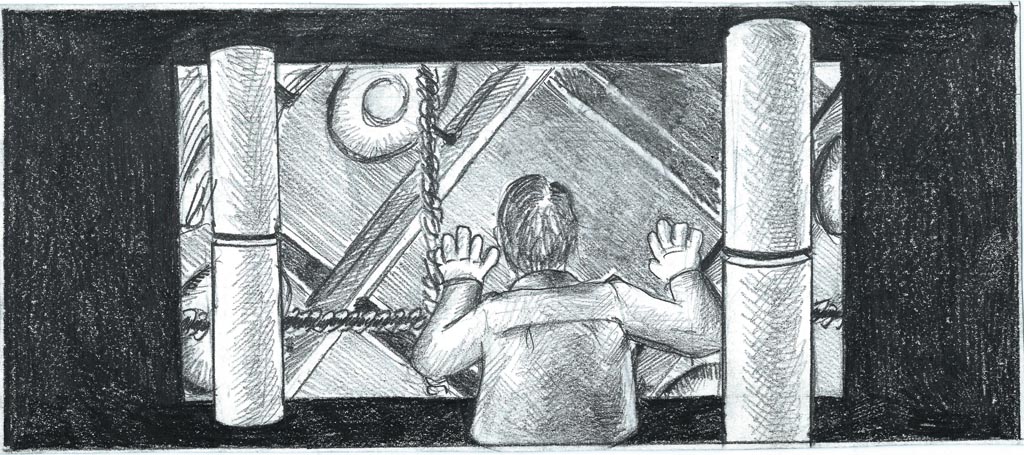
Time to switch on the TV!
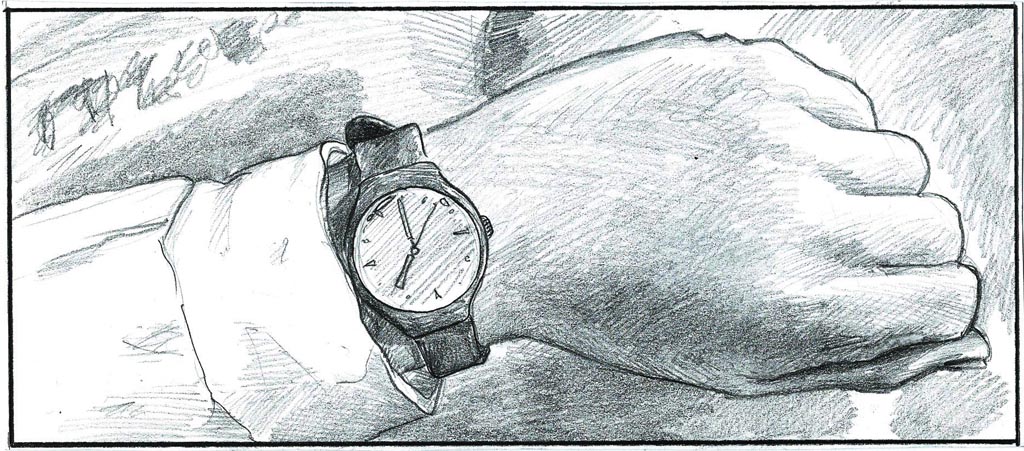
I was very interested in good image quality, but high definition digital video did not yet exist during that time. So I shot on 35mm film. I got access to an ARRI IIC, a camera that was developed in 1964. The cameraman Matthias Fleischmann built a special lens for it (he combined a normal lens with an anamorphic lens, which was sold as a novelty for Super-8 cameras in the 1980's). With this contraption, we could film in breathtaking Cinemascope.
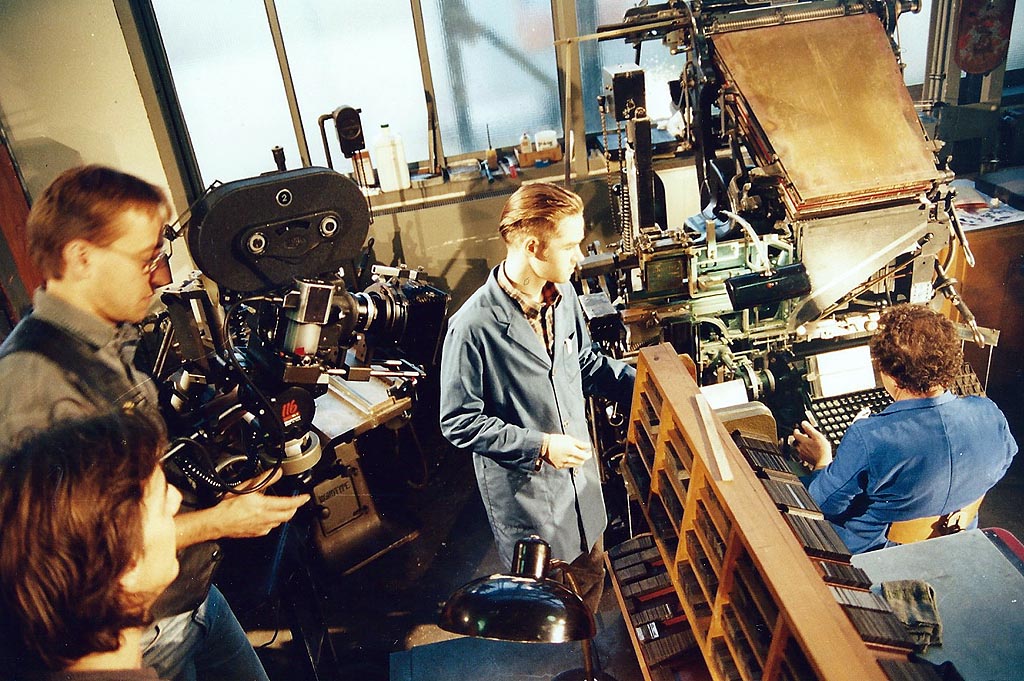
The technical setup had a few disadvantages, though: First, the camera was made for silent movies. It was quite loud when it was running, so the entire film had to be dubbed in the postproduction. The second disadvantage was the optics: Matthias always had to focus two different groups of lenses, which also explains why there's hardly any focus pulling in this film.
A lot of the grip material was also self-made. Thomas Spitzbart did a great job constructing not just a camera crane, but also a lot of other support gear.
Thomas Spitzbart is standing behind the crane on the left side.
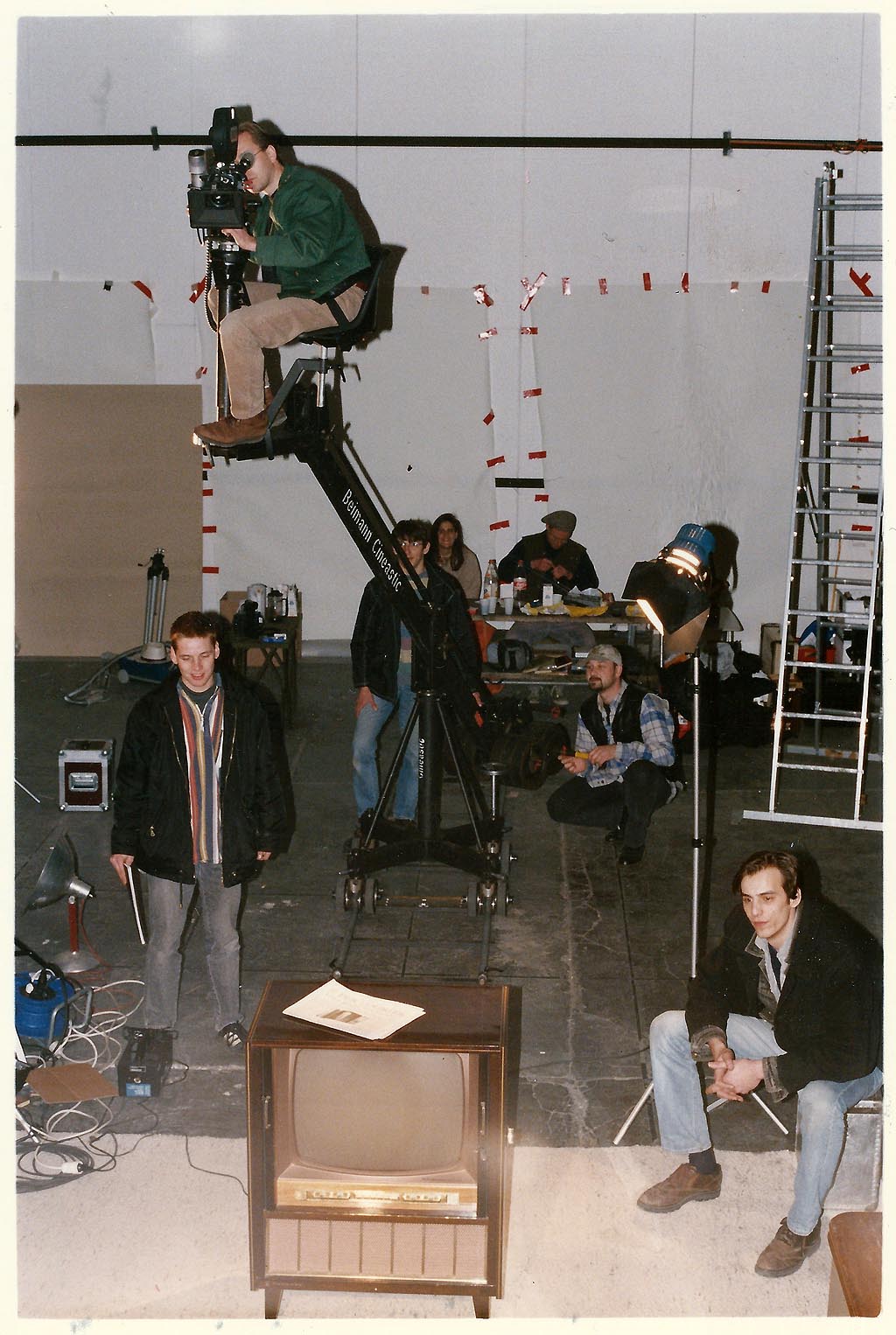
Sami Haidar (on the image above, on the bottom right) helped me with the organization. He discovered many super locations and interesting people. Like the collector of vintage motor bikes, who was happy to play a little role in the movie. Sami also helped me to convince the local Nuremberg newspaper to print a few hundred issues with a special cover for free.
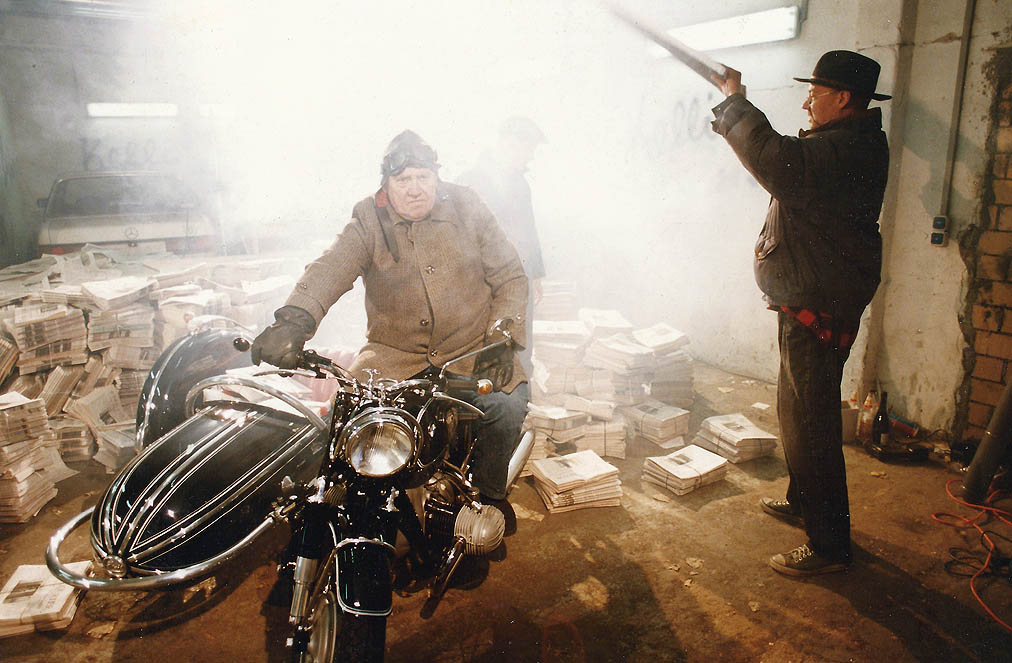
We could also shoot at really nice locations for free. The street scenes were filmed at the vintage set of the Bavaria Filmstudios.
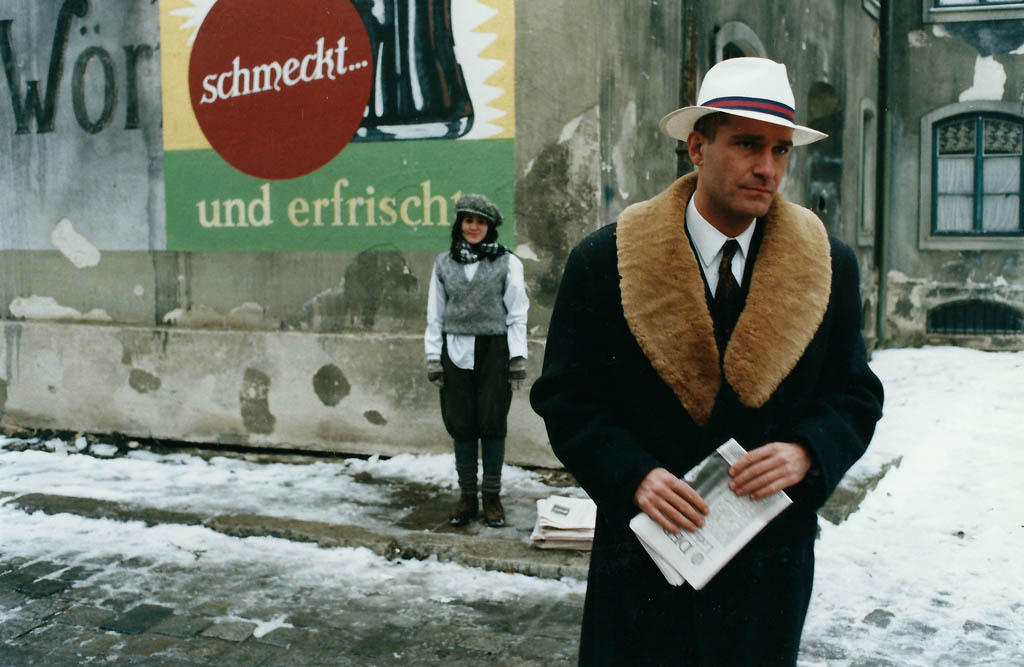
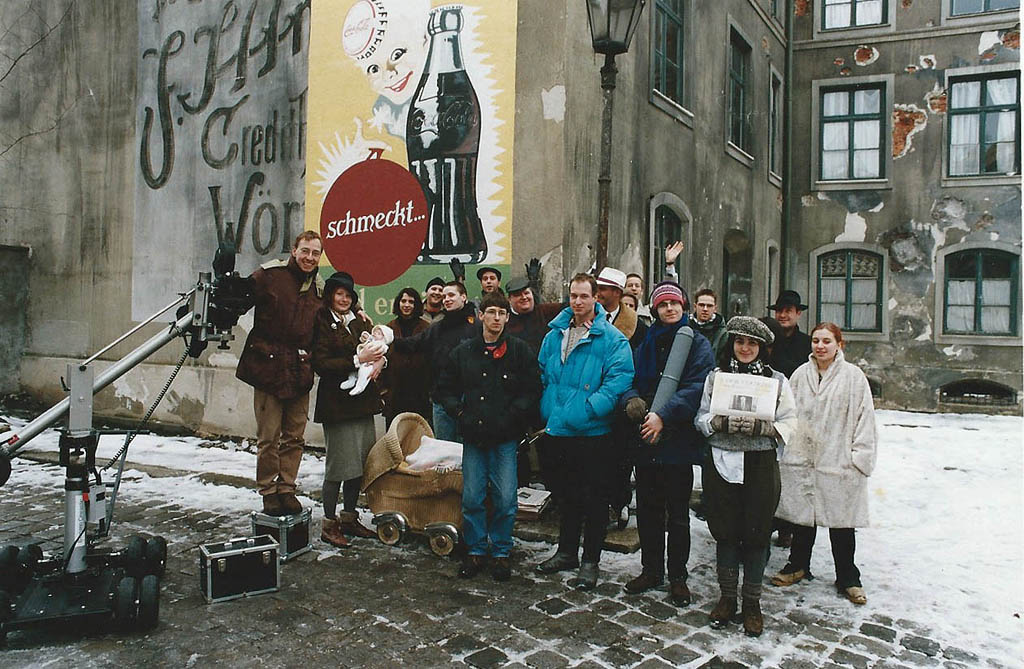
The entire project took about three years: One for preparation, one for shooting (we were just shooting during holidays and on weekends, as we all had regular jobs) and one year for post production. In retrospect, we put a crazy effort into this and today, thanks to digital technology, filmmaking is so much easier and cheaper.
However, I am very happy that I had the chance to realize this project. During the process, I learned a lot about analog filmmaking, which helped me quite a bit in my later career. And I was able to travel a lot, when the film was invited to film festivals all around the world, where it even won a couple of prizes.
Special thanks
I want to thank the countless people who helped me making this film.